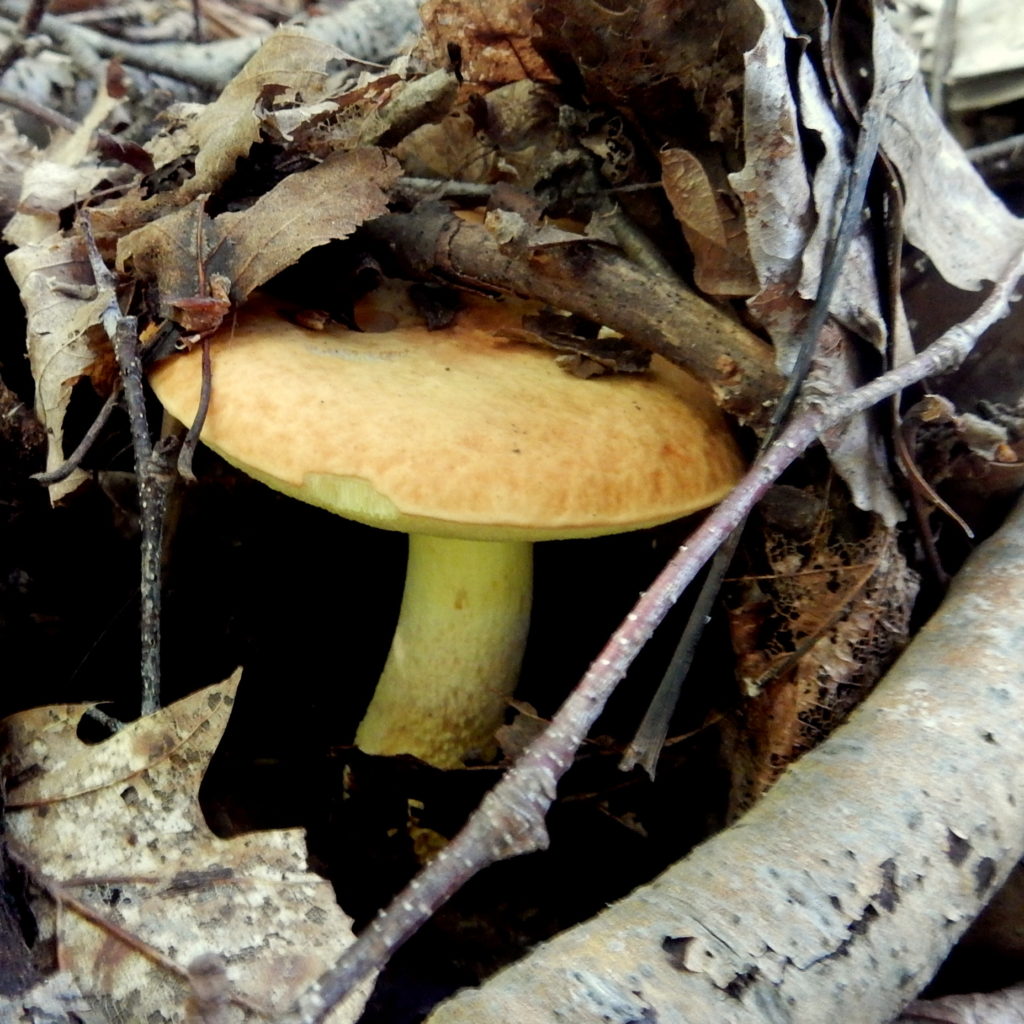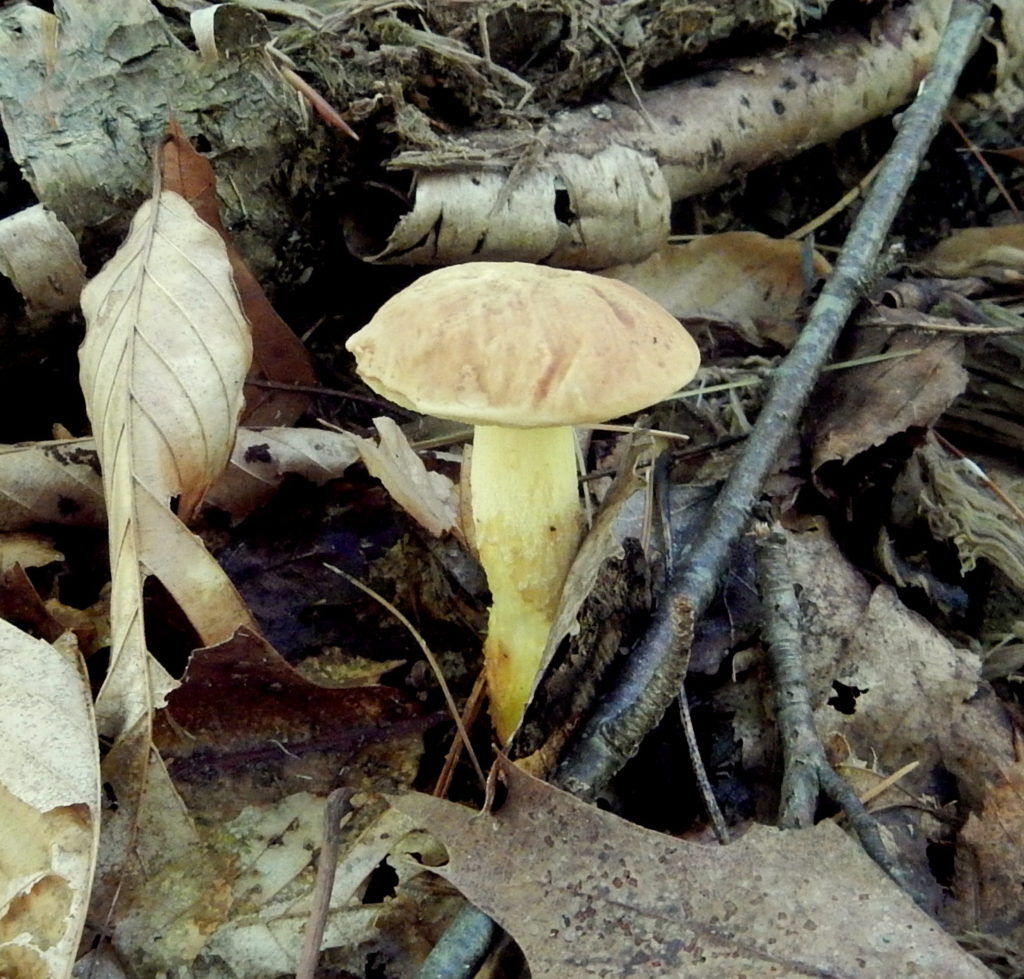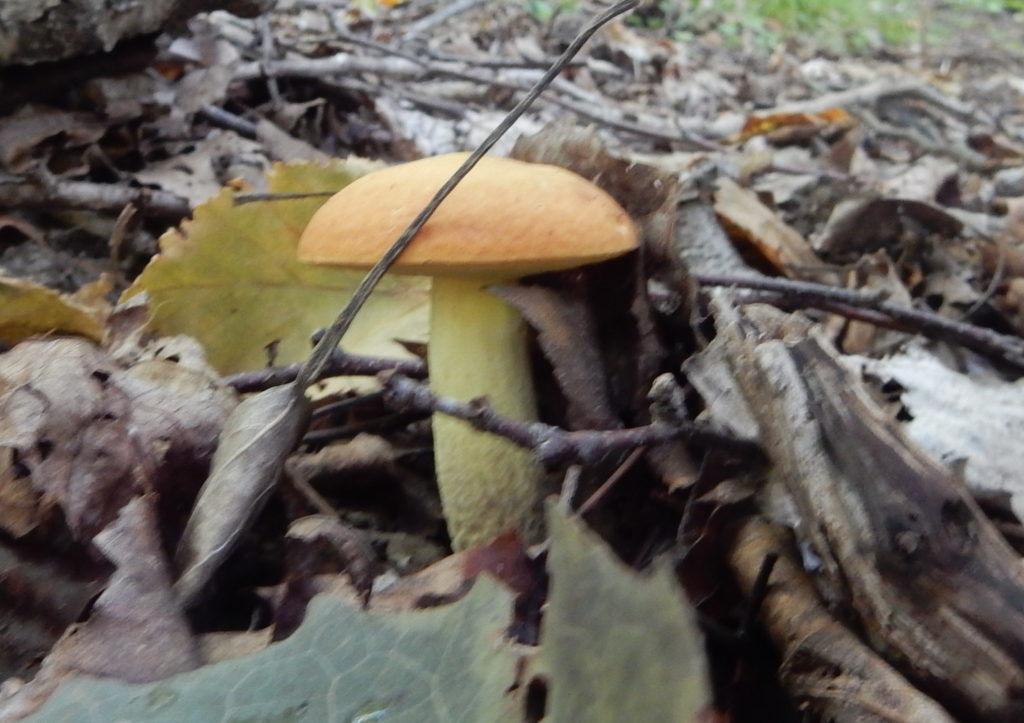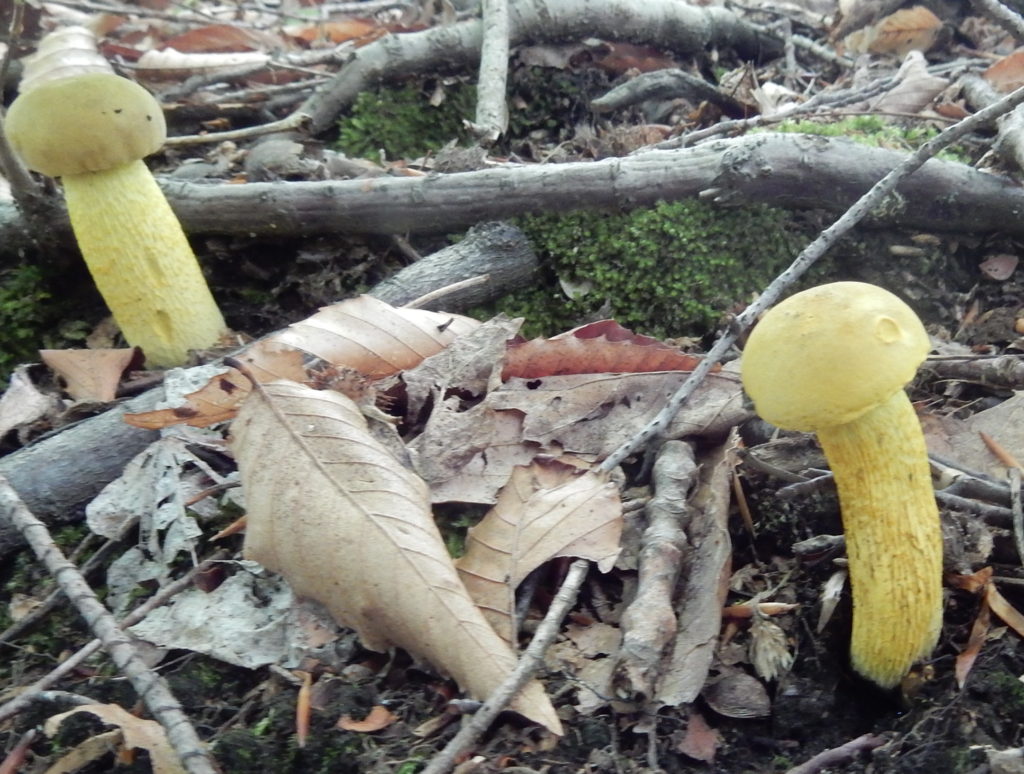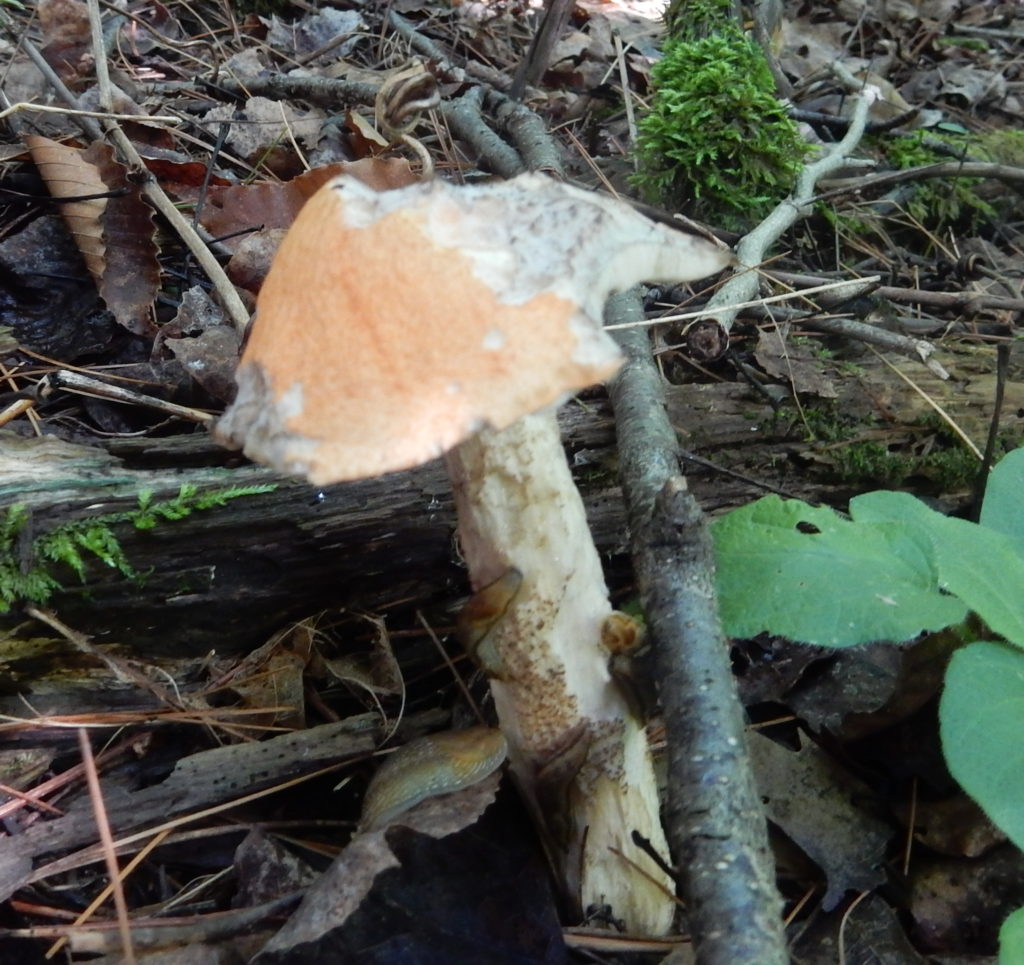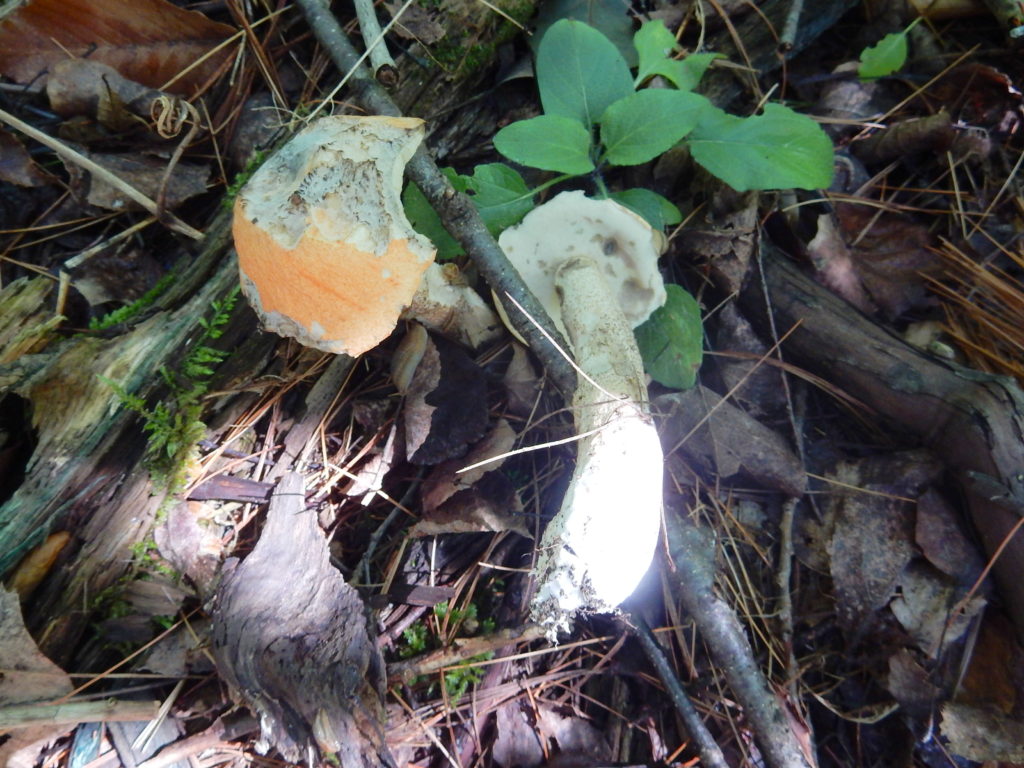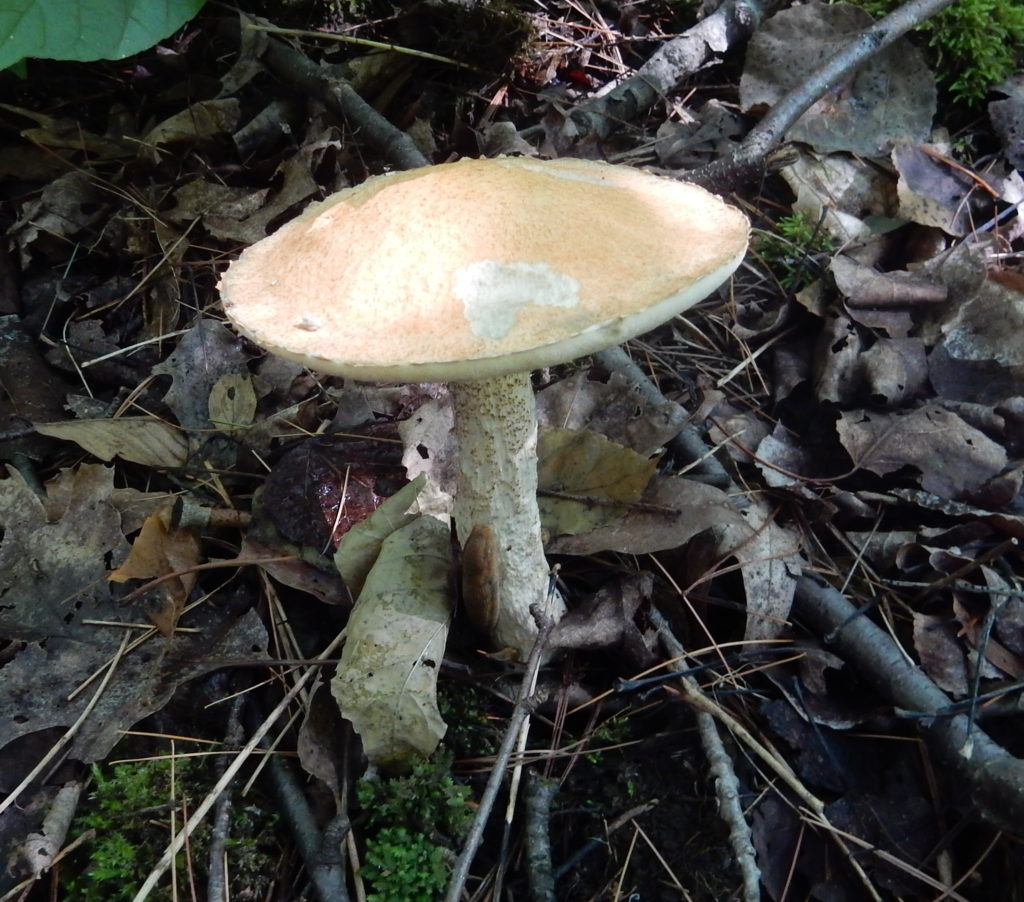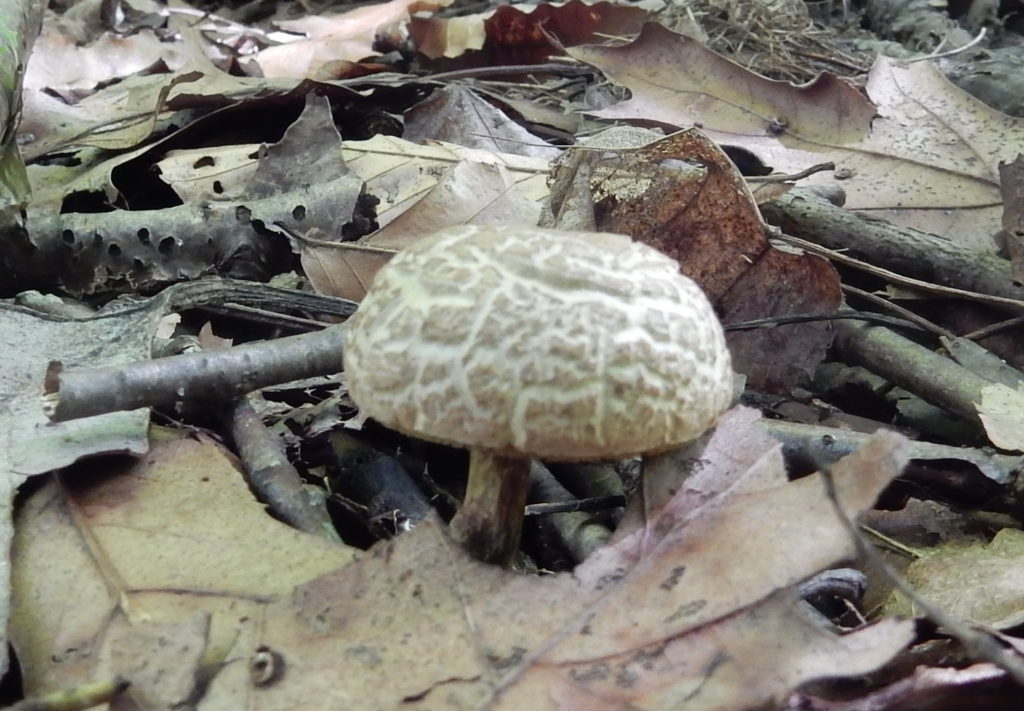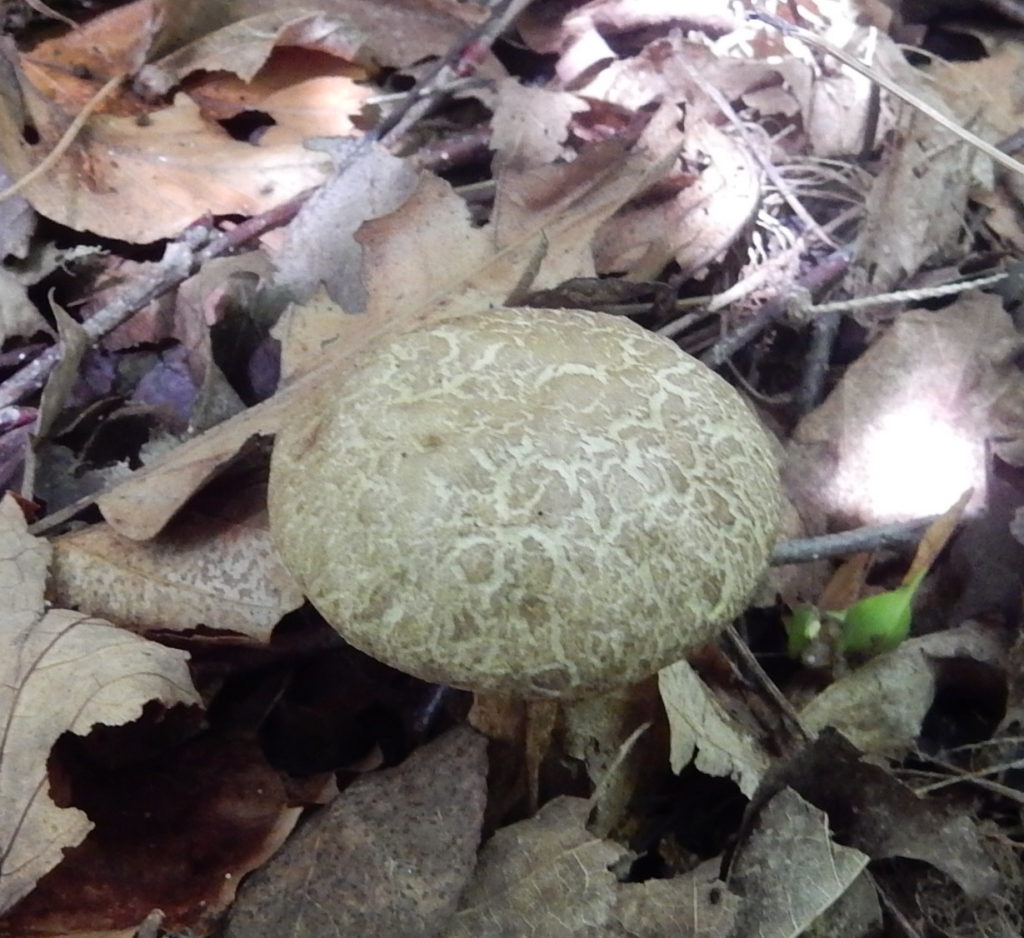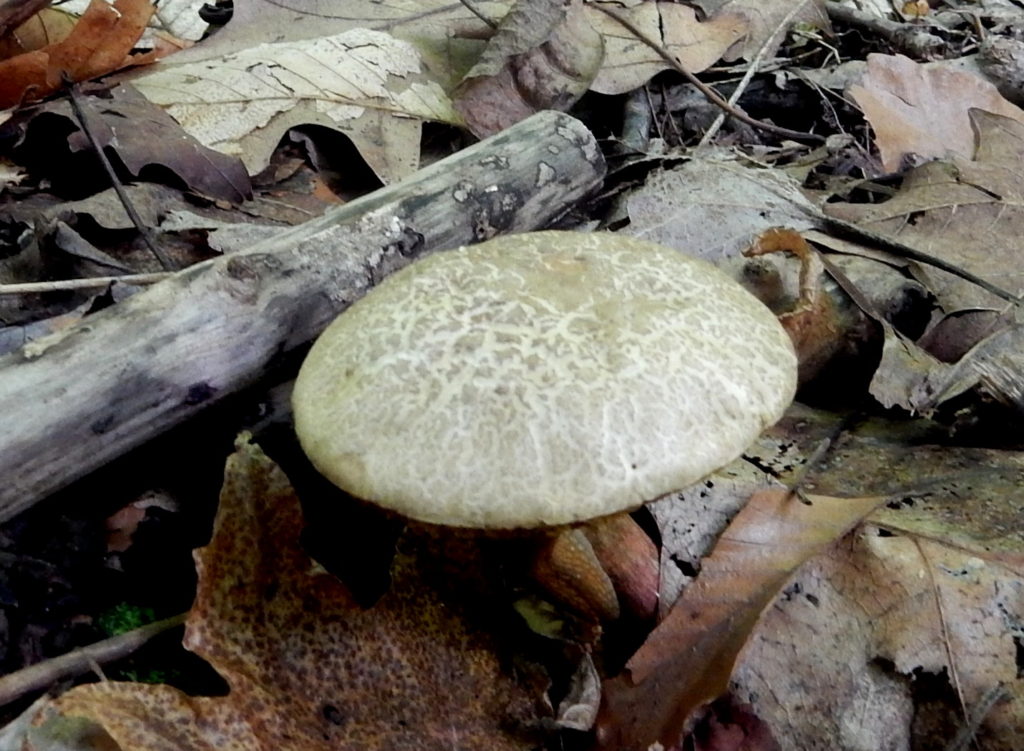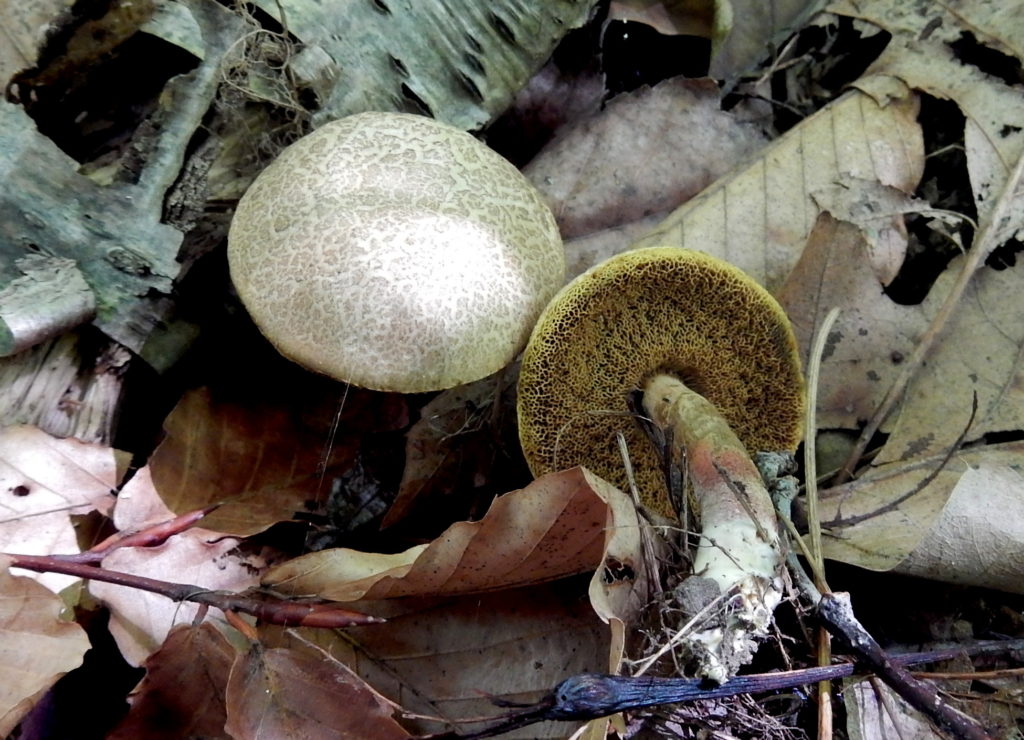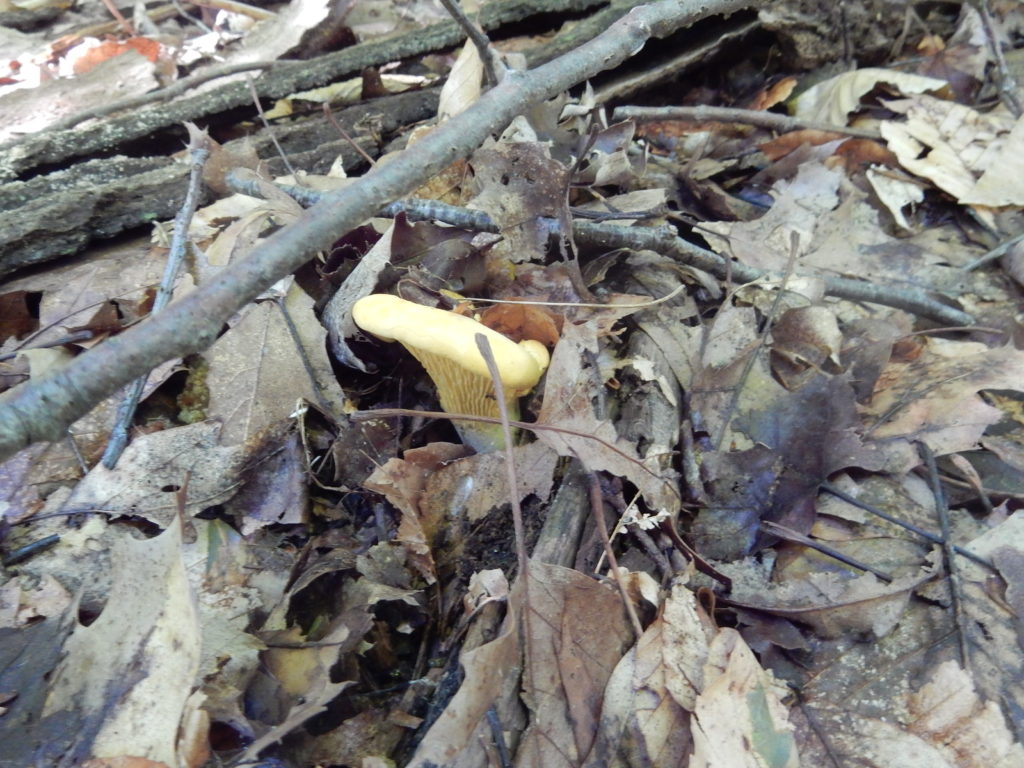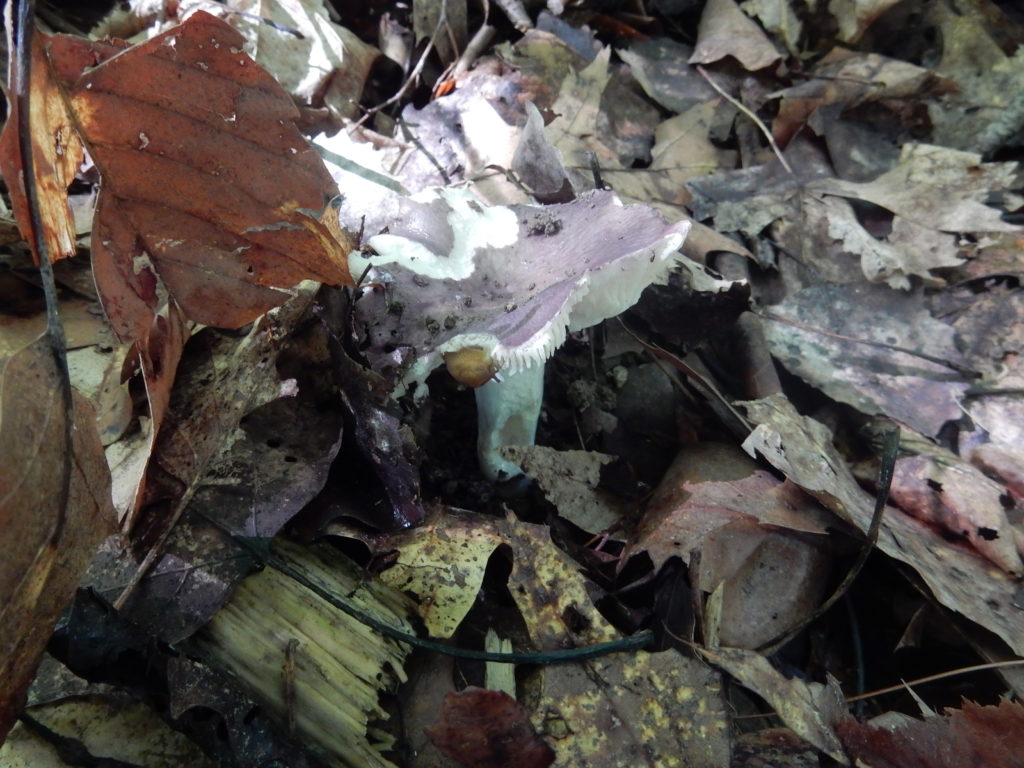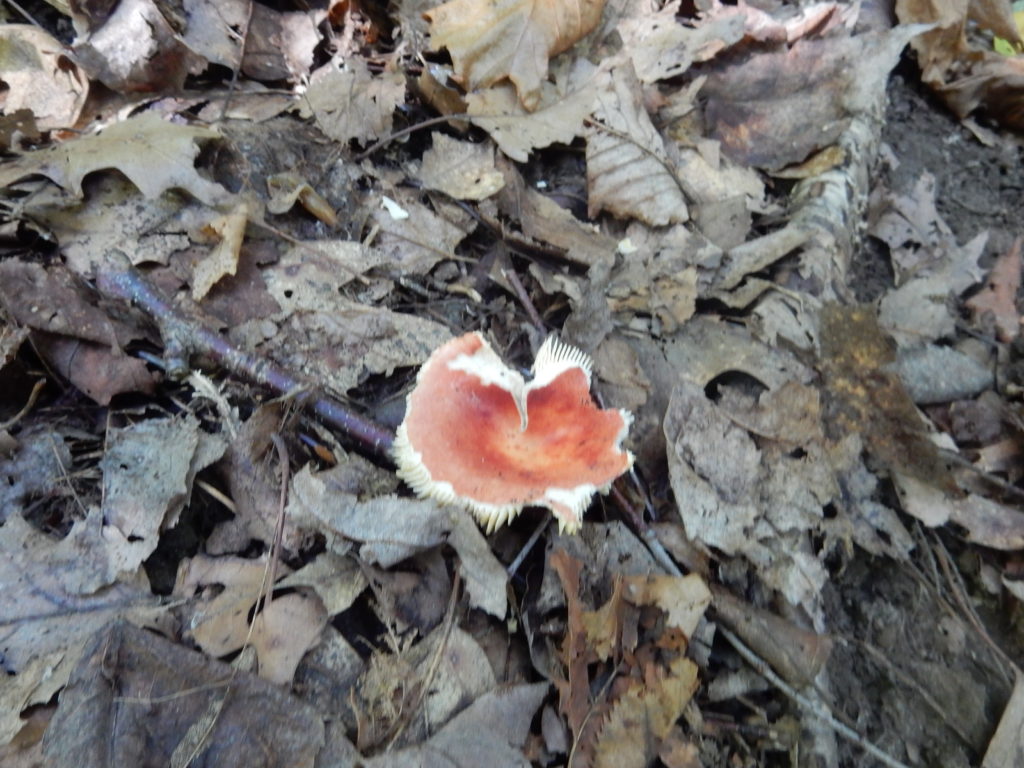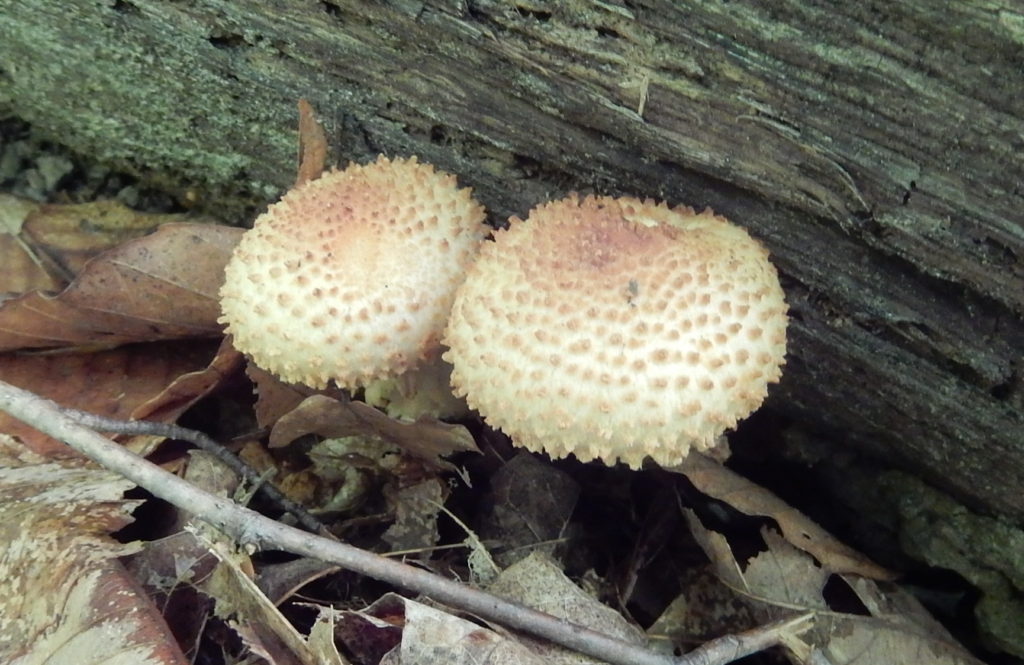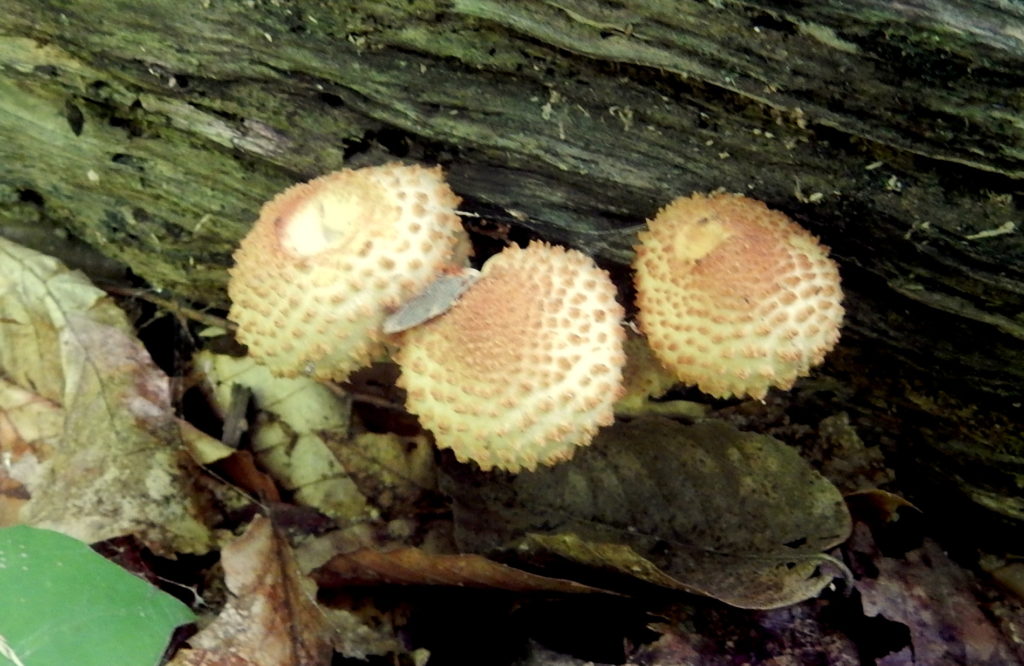It is weekend and there was some rain and thunderstorms lately. In the early morning I checked one patch of coniferous woods (mainly spruce) with zero result. Somewhat later I started in the mixed deciduous woods. As expected, pretty soon some boletes showed up. Four species were prevalent.
Boletus subglabripes
The medium size mushroom prefers birch and grows scattered. The pore surface is intensive yellow and pores are small. Cap is colored in redish-brownish tones and dry. In mature specimens it sometimes seems there are multiple shallow depressions on the cap. There is no characteristic smell (“mushroomy” does not describe much). The flash is firm only in very young specimens (“buttons”), yellow and it does not stain. If packed in the bag they can stick together and get even softer. Spore print is olive brown.
On the close inspection there are some glandular dots on the steam. That is why this species is sometimes refereed to as Leccinum subglabripes.
The mushroom tastes great and can be easily dried.
Retiboletus ornatipes
Quite common bolete in my area. With relatively long season (through August and into September) it is frequently in my daily catch. My family enjoys it quite a bit.
Due to intensive yellow overall appearance the mushroom is easy to spot. Medium size cap has two variations: completely yellow (as stem) or olive green-yellow, as shown:
The stem is quite reticulated (fancy way of saying “grooved”) and in mature specimens tends to be rotten inside. This bolete loves beech trees and sunny slopes.
It dries very well. Unfortunately, during cooking or drying it looses the vibrant yellow coloration and turns dull black.
Leccinum insigne
I frond several specimens of this mushroom, but it seems that for some reason snails really love them and they were quite damaged. There is a possibility this is Leccinum auranticum (Orange Cap Bolete), but since flash does not bruise red, I am pretty confident it is insigne.
As with many other groups of mushroom, the boletes are undergoing redefinition and regrouping through several genera. One of the big genera is Leccinum, characterized by glandular dots on the stem. The Leccinum genus has a bit of bad reputation caused by several reports of poisoning. I eat them on regular basis and never had any issue. My opinion is that problems are connected with raw or under cooked mushrooms.
Boletellus chrrysenteroides
This small bolete does not have enough flash in the cup to be interesting for the table. Stem is way to tough and needs to be discarded. Besides, bugs are all over even very young specimens. Mature specimens are frequently attacted with parasitic fungus that turns them completely white.
Others
There were several other mushroom present, but in very small numbers and widely scattered. I thing long drought still effects majority of terrestrial mushrooms, including boletes.
Token Chanterelle :
Some very damaged Russulas:
Pholiota squarrosa (Scally Pholiota) is quite a sight:


